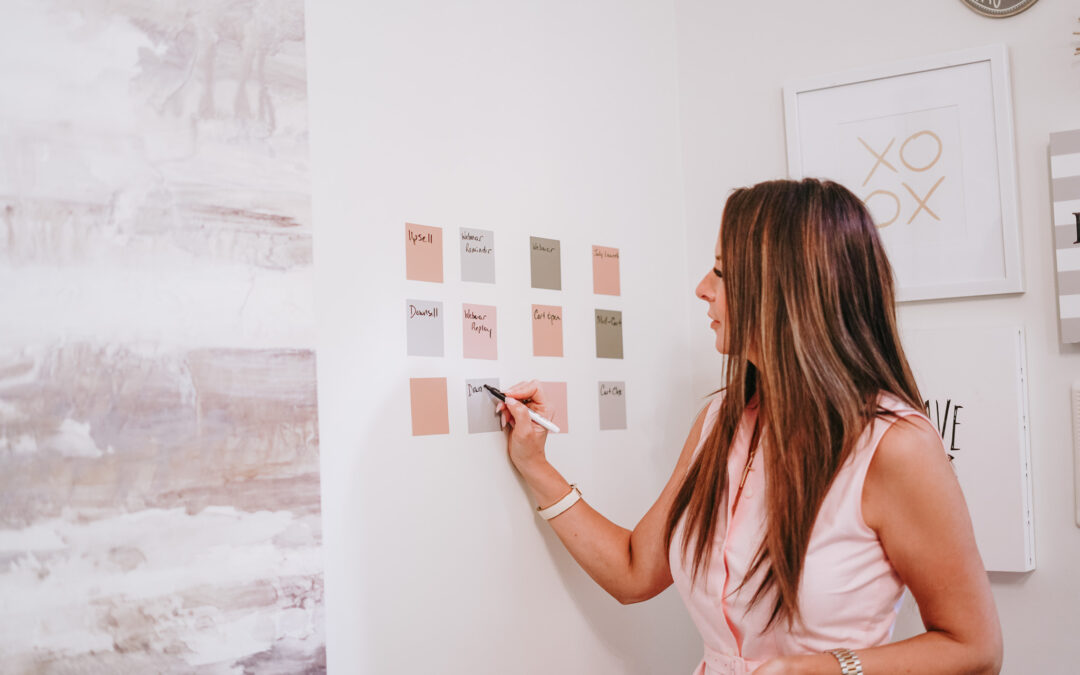
Adding Seasonality to Your Facebook Ads… Without the Cheese
Guys, ‘tis the season!
Specifically, ‘tis the season for mistletoe, gingerbread, snow (unless you’re with me in Georgia), community, family, and all things holiday…
…and it’s THE most fun part of the year. I mean, come on — whether you’re celebrating Christmas, Hanukkah, Kwanzaa, or just the vibes, there’s something extra special in the air.
But, holiday vibes aren’t the only good thing about this season. See, if we’re being honest, I can’t leave out one of the big, big things that this season brings for entrepreneurs: ample opportunities for SALES, engagement, and launching.
After all, it’s called the biggest shopping season of the year for a reason. People are online at this time, and they’re actively buying a lot of things. At the same time, they’re getting ready for a new year — which is why so many of my clients see a boost in purchases post-Christmas.
Enter one of the biggest questions I get this time of year.
How do I make my ads seasonal… without being cheesy?
While sticking out online is always important, there’s something a little bit MORE important about sticking out this time of year. People are so inundated by ads, campaigns, and gift guides that it can be really, really easy to fade into the background — or, worse, to seem disingenuous or cold.
It’s why incorporating seasonality into your ads intentionally (and subtly!) can make such a difference.
Let’s talk about how you can do it.
4 ways to use seasonality in Facebook ads
Add holiday-esque elements to your creative: If there was a particularly well-branded season, it would be the holiday season — so lean into it! Utilize different color palettes (from the typical red & green to warm midnight blues and jewel tones), incorporate textures like glitter or snow, and sprinkle in subtle seasonal icons in your imagery and video creative. This allows your ads to stick out as timely and festive without feeling overtly obvious, allowing them to stand out in crowded feeds.
Stay inclusive: You may be celebrating Christmas or Hannukah, but your audience likely spans a variety of traditions — or none at all! While seasonal focus is a good thing this time of year, don’t accidentally alienate important members of your audience. Instead, be sure to open up your ads to everyone by testing with a variety of inclusions — and balance secular holiday vibes (think: cozy winter scenes) with subtle nods to different ones.
Weave seasonal opportunities to your copy: Your copy is one of the easiest (and most effective) places to weave in a seasonal message — whether it’s a lighthearted pun or a celebratory tone… Play around with a variety of ad copy that includes a medley of holiday emojis, text, and messaging styles… and pay attention to what your community seems to be resonating with.
Utilize the holidays as built-in time constraints: Timeliness is often a huge piece of successful ads, and the holiday season is all about time. Whether it’s a countdown to gifting deadlines or the thought of a New Year reset, people are naturally aware of the ticking clock. Use this to your advantage by testing a variety of messaging that plays with limited-time offers, New Year countdowns, year-end specials, and beyond.
My friends, you’ve got this! The holiday season is such a unique time to connect with your audience — and these tips are built to help you do so inclusively, intentionally, and effectively.
I can’t wait for you to put it all to use!





















